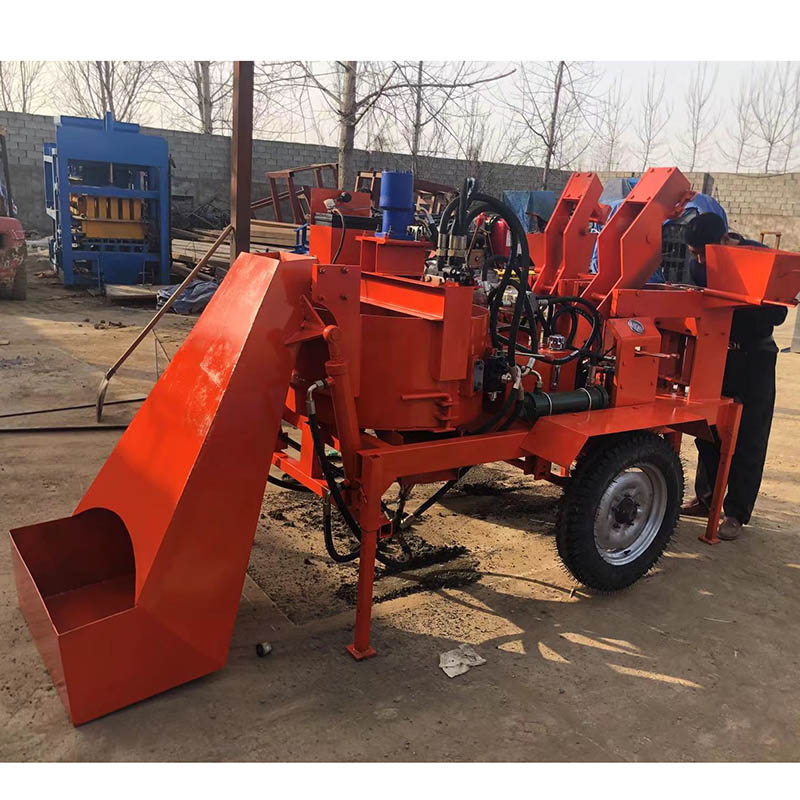
Image source:Aiwei block machine
Introduction
Access to affordable housing is a pressing issue in many parts of the world. Traditional construction methods often prove to be time-consuming, labor-intensive, and costly, making it challenging to meet the growing demand for affordable housing. However, interlocking brick making machines have emerged as a promising solution to address these challenges. These machines automate the production of interlocking bricks, which offer several advantages over traditional bricks. This article explores the potential of interlocking brick making machines in affordable housing projects, highlighting their benefits and the impact they can have on the construction industry.
Cost-Effectiveness
One of the key advantages of interlocking brick making machines is their cost-effectiveness. The production process of interlocking bricks requires less material compared to traditional bricks, as they are designed to interlock with each other. This results in lower material costs, reducing the overall construction expenses. Additionally, interlocking bricks eliminate the need for mortar, further reducing construction costs and labor requirements.
Moreover, interlocking brick making machines improve efficiency and productivity. These machines are capable of producing a large number of bricks in a short amount of time, enabling faster construction progress. The reduced construction time directly translates into cost savings, as labor costs are minimized. By optimizing the use of resources and streamlining the construction process, interlocking brick making machines offer a cost-effective solution for affordable housing projects.
Speed and Efficiency
Interlocking brick making machines significantly accelerate the construction process. These machines produce bricks at a faster rate compared to traditional brick making methods, enabling rapid construction progress. The interlocking design of the bricks eliminates the need for curing time and mortar application, further expediting the building process. As a result, affordable housing projects can be completed in shorter timeframes, reducing the waiting period for families in need of housing.
The increased speed and efficiency provided by interlocking brick making machines have a significant impact on overall project timelines and costs. Governments, non-profit organizations, and developers can complete affordable housing projects more efficiently, enabling them to address the housing shortage more effectively.
Sustainability and Environmental Benefits
Interlocking brick making machines offer environmental benefits that align with sustainable development goals. The interlocking bricks themselves are often made from local and readily available materials such as soil, clay, or concrete. This reduces the need for transporting materials over long distances, minimizing carbon emissions associated with transportation.
Furthermore, interlocking bricks are designed to be dry-stacked, eliminating the use of mortar and reducing waste. Traditional brick construction typically generates a significant amount of construction debris due to mortar application and breakage during handling. In contrast, interlocking bricks can be easily disassembled and reused, promoting resource efficiency and minimizing waste.
The sustainability of interlocking brick making machines extends beyond the construction phase. Interlocking bricks offer excellent thermal insulation properties, reducing the need for artificial cooling or heating in buildings. This results in energy savings and reduced environmental impact throughout the building’s lifespan.
Improved Structural Integrity
Interlocking bricks provide enhanced structural integrity compared to traditional bricks. The interlocking design creates a strong bond between bricks, increasing the load-bearing capacity of the structure. Interlocking brick buildings have proven to be more resistant to seismic activity, offering better protection against earthquakes.
The increased stability and durability of interlocking brick structures contribute to the longevity of affordable housing projects. Families residing in these buildings can enjoy safe and secure living conditions, reducing the risk of structural failures or collapses. This is particularly important in regions prone to natural disasters, where resilient housing is essential.
Community Involvement and Empowerment
Interlocking brick making machines can promote community involvement and empowerment in affordable housing projects. These machines are relatively easy to operate and require minimal technical expertise. This allows communities to actively participate in the construction process, reducing dependency on external contractors and creating opportunities for skill development and employment.
By involving community members in the construction of their own homes, interlocking brick making machines foster a sense of ownership and pride. This participatory approach strengthens community bonds and creates a sense of shared responsibility towards the housing project. Community empowerment through active involvement enhances the sustainability and long-term success of affordable housing initiatives.
Scalability and Adaptability
Interlocking brick making machines offer scalability and adaptability, making them suitable for a wide range of affordable housing projects. These machines can be adjusted to produce different sizes and types of interlocking bricks, accommodating various architectural designs and construction requirements.
The scalability of interlocking brick making machines allows for incremental construction. Affordable housing projects can be started with a small number of bricks and gradually expanded as funding or resources become available. This flexibility enables a phased approach to construction, making it easier to manage and finance affordable housing initiatives.
Conclusion
Interlocking brick making machines present a viable and sustainable solution for affordable housing projects. Their cost-effectiveness, speed and efficiency, environmental benefits, improved structural integrity, community involvement, and scalability make them a valuable tool in addressing the housing needs of communities around the world.
Governments, non-profit organizations, and developers should consider the potential of interlocking brick making machines when planning affordable housing initiatives. By embracing this technology, stakeholders can accelerate construction timelines, reduce costs, promote sustainability, empower communities, and provide safe and durable housing for those in need. The integration of interlocking brick making machines in affordable housing projects holds great promise in tackling the global housing crisis and improving living conditions for countless individuals and families.
